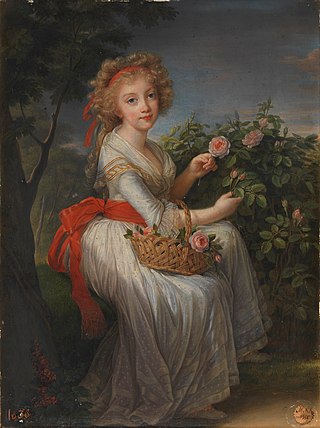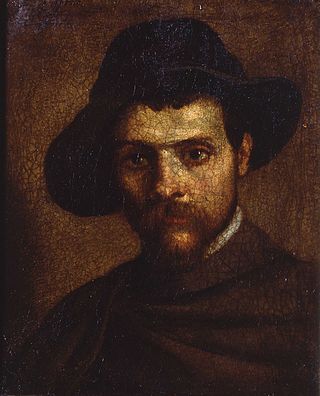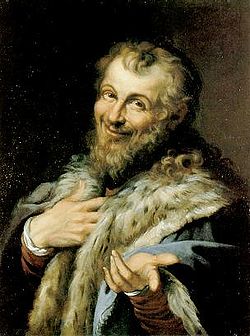
Agostino Carracci was an Italian painter, printmaker, tapestry designer, and art teacher. He was, together with his brother, Annibale Carracci, and cousin, Ludovico Carracci, one of the founders of the Accademia degli Incamminati in Bologna. Intended to devise alternatives to the Mannerist style favored in the preceding decades, this teaching academy helped propel painters of the School of Bologna to prominence.

Annibale Carracci was an Italian painter and instructor, active in Bologna and later in Rome. Along with his brother and cousin, Annibale was one of the progenitors, if not founders of a leading strand of the Baroque style, borrowing from styles from both north and south of their native city, and aspiring for a return to classical monumentality, but adding a more vital dynamism. Painters working under Annibale at the gallery of the Palazzo Farnese would be highly influential in Roman painting for decades.

Jusepe de Ribera was a Spanish painter and printmaker who, along with Francisco de Zurbarán, Bartolomé Esteban Murillo, and the singular Diego Velázquez, is regarded as one of the major artists of Spanish Baroque painting. Referring to a series of Ribera exhibitions held in the late 20th century, Philippe de Montebello wrote "If Ribera's status as the undisputed protagonist of Neapolitan painting had ever been in doubt, it was no longer. Indeed, to many it seemed that Ribera emerged from these exhibitions as not simply the greatest Neapolitan artist of his age but one of the outstanding European masters of the seventeenth century." Jusepe de Ribera has also been referred to as José de Ribera, Josep de Ribera, and Lo Spagnoletto by his contemporaries, early historians, and biographers.

Giovanni Lanfranco was an Italian painter of the Baroque period.

Giovanni Battista Caracciolo (1578–1635) was an Italian artist and important Neapolitan follower of Caravaggio. He was a member of the murderous Cabal of Naples, with Belisario Corenzio and Giambattista Caracciolo, who were rumoured to have poisoned and disappeared their competition for painting contracts.

Mattia Preti was an Italian Baroque artist who worked in Italy and Malta. He was appointed a Member of the Order of Saint John.

Pope Paul III and His Grandsons is an oil on canvas painting by Titian, housed in the Museo di Capodimonte, Naples. It was commissioned by the Farnese family and painted during Titian's visit to Rome between autumn 1545 and June 1546. It depicts the scabrous relationship between Pope Paul III and his grandsons, Ottavio and Alessandro Farnese. Ottavio is shown in the act of kneeling, to his left; Alessandro, wearing a cardinal's dress, stands behind him to his right. The painting explores the effects of ageing and the manoeuvring behind succession; Paul was at the time in his late seventies and ruling in an uncertain political climate as Charles V, Holy Roman Emperor came into ascendancy.

The Banquet of a Rich Glutton is an oil on canvas painting by the Italian Baroque painter Mattia Preti, executed c. 1665. It is housed in the Pinacoteca of the Galleria Nazionale d'Arte Antica, in Rome.

Pietà is a c. 1600 oil on canvas painting by Annibale Carracci, the earliest surviving work by him on the subject, which was commissioned by Odoardo Farnese. It moved from Rome to Parma to Naples as part of the Farnese collection and is now in the National Museum of Capodimonte in Naples. It is one of many 16th century Bolognese paintings dedicated to the theme of the Pietà, and it is counted among Carracci's masterpieces.

Charles of Bourbon Visiting St Peter's Basilica is an oil-on-canvas painting by Italian artist Giovanni Paolo Pannini, commissioned by its subject Charles of Bourbon in 1746 and completed later that year. It was part of the commission as the same artist's Charles of Bourbon Visiting Pope Benedict XIV at the Coffee House del Quirinale and both works are now in the National Museum of Capodimonte in Naples.

Portrait of Princess Maria Christina is an oil-on-canvas painting executed c. 1790 by Élisabeth Vigée Le Brun. It was commissioned by Maria Christina's parents Maria Carolina of Austria and Ferdinand I of the Two Sicilies. Vigée Le Brun had taken refuge in Naples after fleeing Paris in 1789 during the French Revolution.

Self-Portrait is a 1593 oil on canvas painting by Annibale Carracci, now in the Galleria Nazionale di Parma. It is dated 17 April 1593 on the top left of the canvas.

The Mystic Marriage of St Catherine is a c.1585 oil on canvas painting by Annibale Carracci, now in the Gallerie Nazionali di Capodimonte in Naples, Italy. The composition and sfumato effect owe much to Corregio, particularly the latter's painting of the same subject now in the Louvre.

Elena Barozzi was a celebrated Venetian patrician.

Madonna and Child with Donors or Sacred Conversation with Donors is a c. 1525 oil on panel painting by Palma Vecchio, now in the Museo nazionale di Capodimonte in Naples.

Penitent Magdalene is a c. 1550 oil on canvas painting by Titian, now in the Museo di Capodimonte in Naples.

Portrait of Cardinal Alessandro Farnese is a c. 1545 – 46 oil on canvas three-quarter-length portrait of Alessandro Farnese the Younger (1520-1589) by Titian, now in the Museo nazionale di Capodimonte in Naples.

Portrait of Pope Paul III with Camauro is a 1545 – 1546 oil on canvas painting by Titian, now in the Museo nazionale di Capodimonte in Naples.

Portrait of Charles V or Portrait of a Man Wearing the Order of the Golden Fleece is a c. 1549 oil on canvas painting by Titian, now in the Museo di Capodimonte in Naples.




















